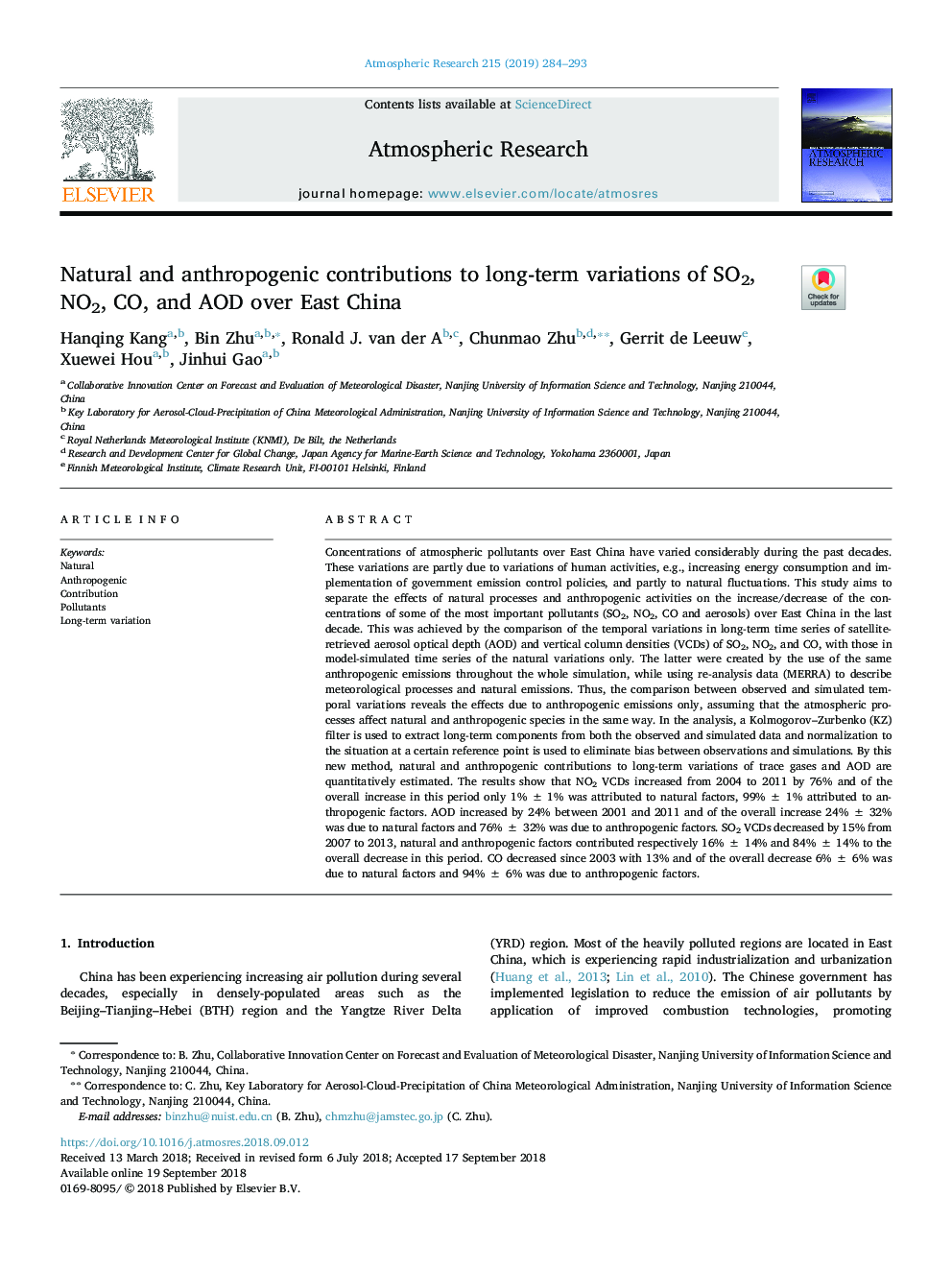| Article ID | Journal | Published Year | Pages | File Type |
|---|---|---|---|---|
| 11028684 | Atmospheric Research | 2019 | 10 Pages |
Abstract
Concentrations of atmospheric pollutants over East China have varied considerably during the past decades. These variations are partly due to variations of human activities, e.g., increasing energy consumption and implementation of government emission control policies, and partly to natural fluctuations. This study aims to separate the effects of natural processes and anthropogenic activities on the increase/decrease of the concentrations of some of the most important pollutants (SO2, NO2, CO and aerosols) over East China in the last decade. This was achieved by the comparison of the temporal variations in long-term time series of satellite-retrieved aerosol optical depth (AOD) and vertical column densities (VCDs) of SO2, NO2, and CO, with those in model-simulated time series of the natural variations only. The latter were created by the use of the same anthropogenic emissions throughout the whole simulation, while using re-analysis data (MERRA) to describe meteorological processes and natural emissions. Thus, the comparison between observed and simulated temporal variations reveals the effects due to anthropogenic emissions only, assuming that the atmospheric processes affect natural and anthropogenic species in the same way. In the analysis, a Kolmogorov-Zurbenko (KZ) filter is used to extract long-term components from both the observed and simulated data and normalization to the situation at a certain reference point is used to eliminate bias between observations and simulations. By this new method, natural and anthropogenic contributions to long-term variations of trace gases and AOD are quantitatively estimated. The results show that NO2 VCDs increased from 2004 to 2011 by 76% and of the overall increase in this period only 1%â¯Â±â¯1% was attributed to natural factors, 99%â¯Â±â¯1% attributed to anthropogenic factors. AOD increased by 24% between 2001 and 2011 and of the overall increase 24%â¯Â±â¯32% was due to natural factors and 76%â¯Â±â¯32% was due to anthropogenic factors. SO2 VCDs decreased by 15% from 2007 to 2013, natural and anthropogenic factors contributed respectively 16%â¯Â±â¯14% and 84%â¯Â±â¯14% to the overall decrease in this period. CO decreased since 2003 with 13% and of the overall decrease 6%â¯Â±â¯6% was due to natural factors and 94%â¯Â±â¯6% was due to anthropogenic factors.
Related Topics
Physical Sciences and Engineering
Earth and Planetary Sciences
Atmospheric Science
Authors
Hanqing Kang, Bin Zhu, Ronald J. van der A, Chunmao Zhu, Gerrit de Leeuw, Xuewei Hou, Jinhui Gao,
